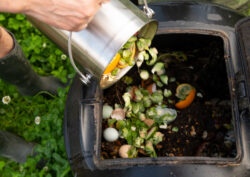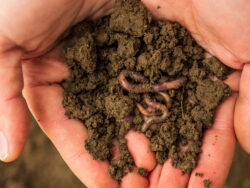Earthworms are an integral part in the ecosystem. With the winter melting away and the spring rolling in, our little wormy friends awaken. When creating a gorgeous, healthy garden, you must take care of the bugs that make it possible!

THE GREAT RECYCLERS
Worms are a huge part of a healthy garden. Why are they so important you ask? Well, they’re nature’s natural recyclers, alongside our Fungi Friends, as you can read in my previous piece on the subject here! What makes them so important? Well, there’s really 2 big categories that they aid the ecosystem in.
An amazing way to fertilize your garden, and get rid of those pesky food scraps is a compost pile filled with earthworms! Worms eat the garbage and waste, and then excrete nutrient rich, softened up soil that is perfect for plants. Their burrowing and digging also loosens up the dirt, so keeping them in your garden is a great way to aerate the soil! This tunneling allows water to seep through more easily too.
FOOD SOURCE
Birds and other backyard critters love to indulge in an earthworm feast. Although this may not be important to your own personal ecosystem, it is a huge part of the overarching natural order of things. There are 3 different species of earthworms, each with their own burrowing habits and depth of soil. Epigeic species dwell on the surface level of soil and they feed on plant material. They’re also well adapted to temperature and moisture changes. Endogeic species dwell in the upper level of soil, just beneath the surface. The burrows that they create are soon filled in with water and other loose soil. The Anecic species create deep burrows that remain permanent that extend several feet.


Now that we know what they do, I want to let you in on a few hot tips to make your garden extra habitable to our squirmy little friends. Organic mulch, a layer of carbon compound that is placed on the surface of the soil to protect it. You can make your own mulch by following this tutorial! Placing mulch down allows the worms a little loose protection on the surface of the soil, as well as a variety of nutrients to redistribute throughout the soil.
If you frequently till your soil, refrain from any further tilling. This will allow the worms to make a home in the dirt and tilling it too frequently will scare them away. Adding your own manure and compost is a huge draw for attracting squirmy dirt eaters! Here’s a piece on composting by Montana Grant! Ditching the chemicals will allow the worms to live healthy and happily, along with all of the other helpful critters. There’s natural ways to keep the weeds and unhelpful pests at bay, such as acidic mulch. Although, be careful, it’s easy to accidentally kill off your little helpers when trying to suffocate the weeds.
 Now that you have a gorgeous garden full of earthworms, the trick is going to be managing the population. Too many can be a problem, they get a bit overzealous and eat all your decomposing soil. Use this tutorial to measure the # of earthworms in the soil!
Now that you have a gorgeous garden full of earthworms, the trick is going to be managing the population. Too many can be a problem, they get a bit overzealous and eat all your decomposing soil. Use this tutorial to measure the # of earthworms in the soil!
Well, that’s my piece on these beautiful and curious little garden dwellers. I wish you a beautiful spring and a garden to match! Happy worming!